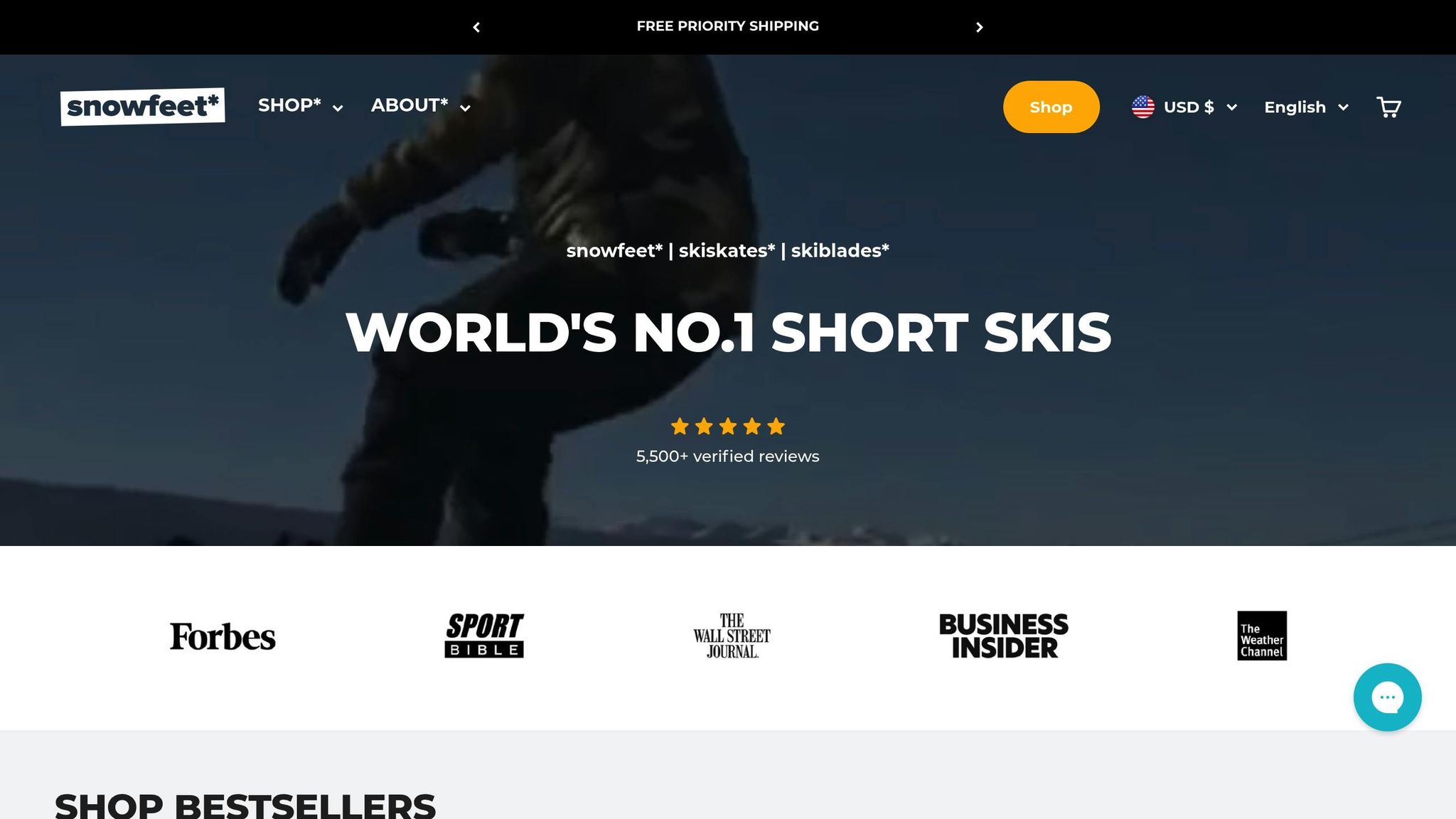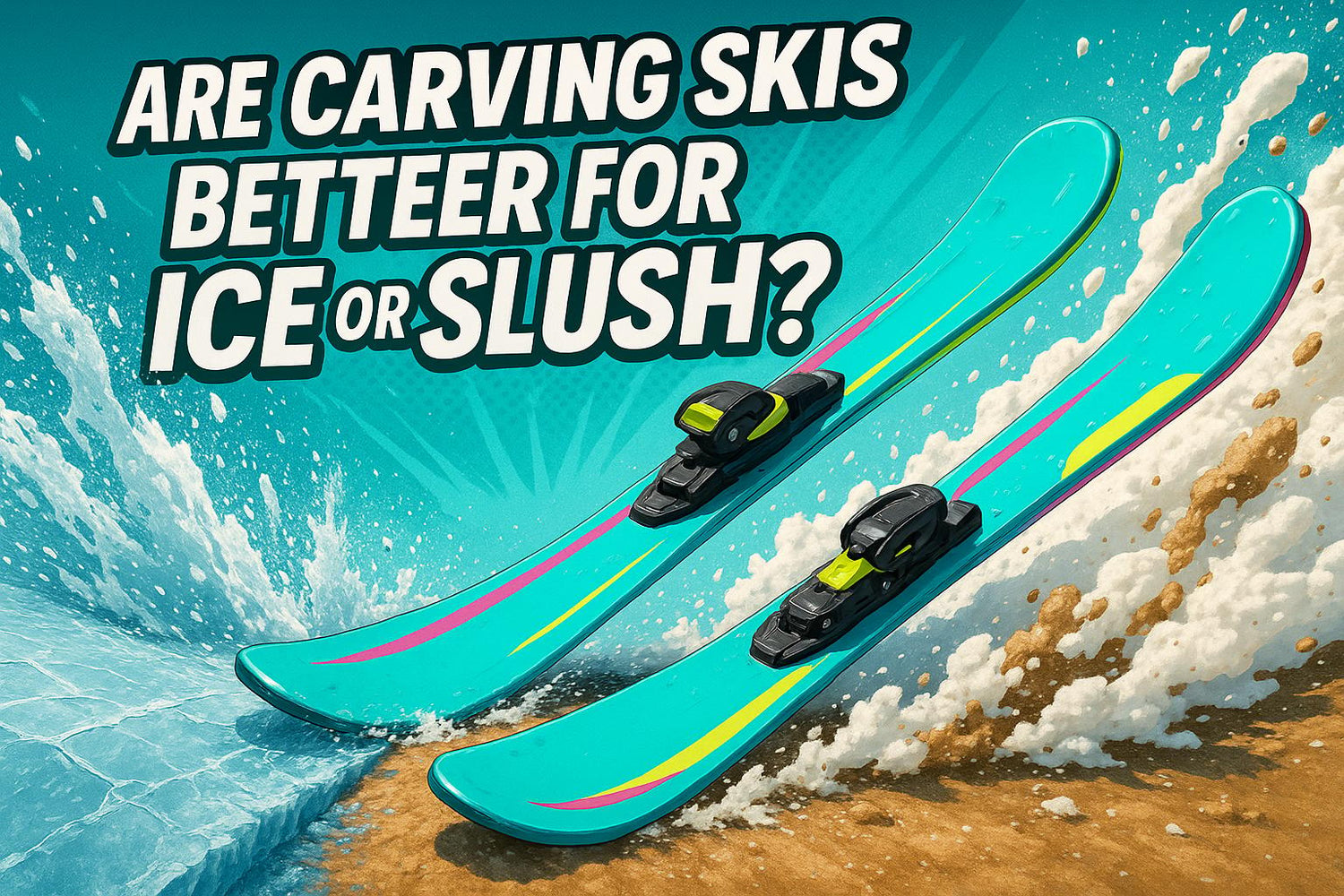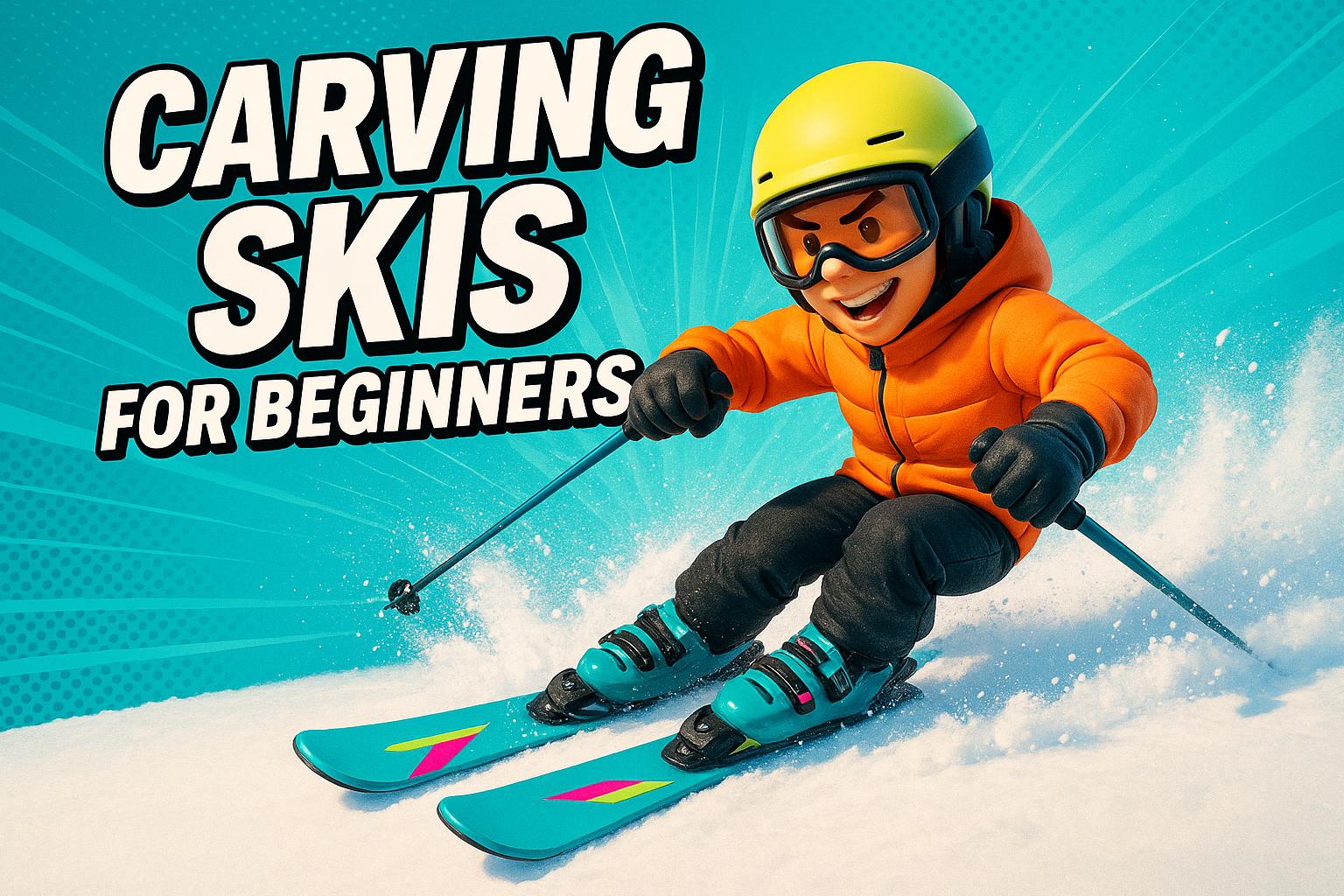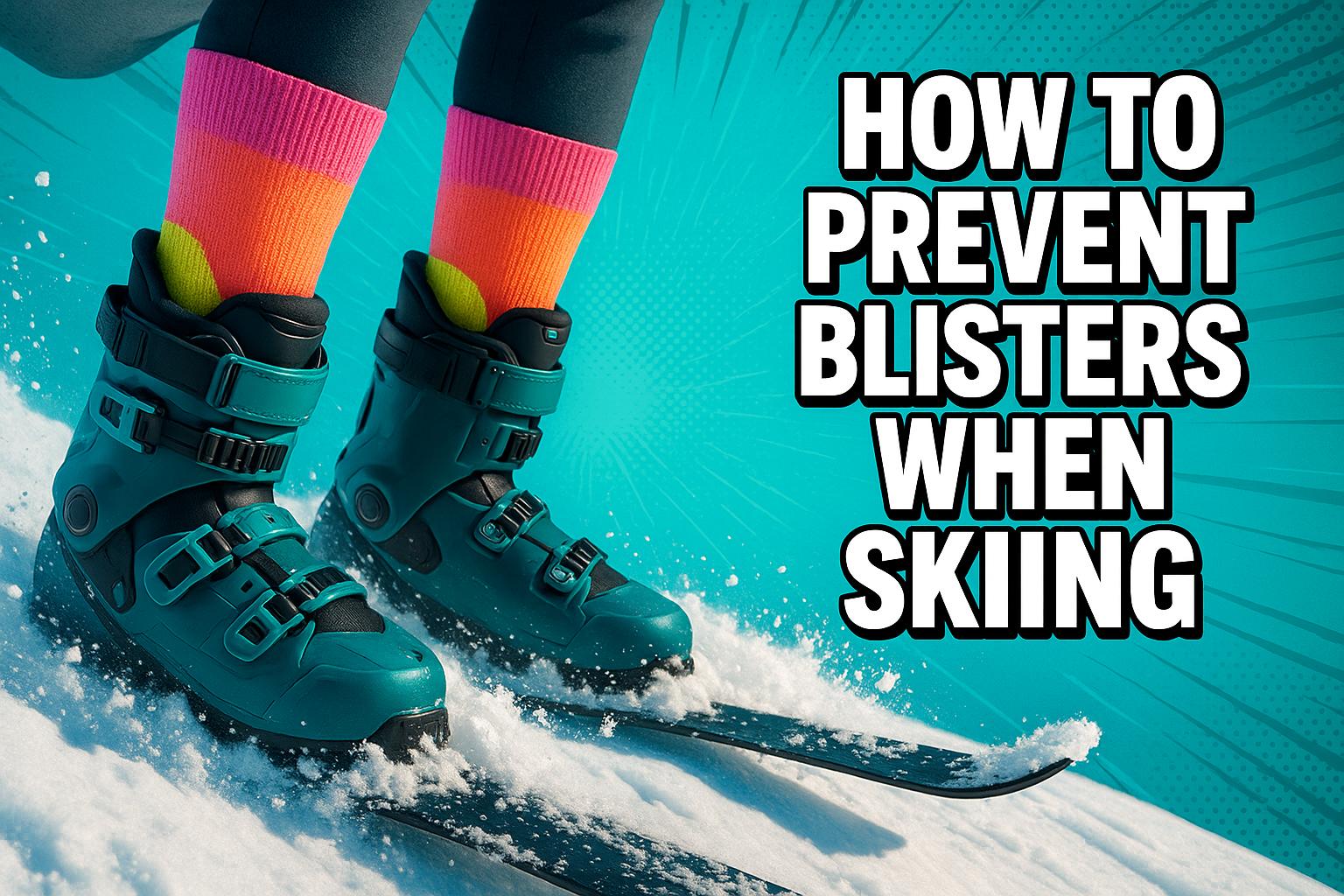When you're skiing on ice or slush, your gear can make or break your day. Here's the scoop:
- Carving Skis: Great for icy conditions due to their sharp edge grip. But in slush, they can feel heavy, draggy, and tire you out fast.
- Snowfeet Skiblades & Skiskates: These shorter, lightweight options handle both ice and slush well. They offer better control, less fatigue, and fit in your backpack. Plus, they work with standard winter boots.
Bottom line: If you're an advanced skier who loves speed and precision on groomed ice, carving skis are your best bet. But if you want something lighter, easier to use, and better for mixed conditions, Snowfeet products might be the way to go.
| Feature | Carving Skis | Snowfeet Products |
|---|---|---|
| Performance on Ice | Strong edge grip, needs skill | Responsive and controlled |
| Handling in Slush | Draggy and tiring | Smooth and fast |
| Portability | Bulky and heavy | Lightweight and compact |
| Price Range | $300–$1,500+ | $150–$690 |
So, what kind of skier are you? Pick the gear that matches your style and hit the slopes with confidence!
HOW TO SKI WITH CONFIDENCE WITH AN OLYMPIC SKIER | Ice, Steeps, Fog and Slush
1. Traditional Carving Skis
Traditional carving skis from brands like Rossignol, Atomic, Head, and Elan are dependable on icy terrain but tend to fall short when faced with slushy conditions.
Maneuverability in Slush
Long carving skis can be a handful in slush. They create more drag, making turns slower and harder to execute. Plus, the soft, wet snow tends to cause the skis to sink deeper, forcing you to work harder to stay in control. As skier cantunamunch puts it, "Slush gives you a bigger balance point". While that might sound like a good thing, it actually makes staying stable more challenging, especially when you're trying to carve clean turns.
Effort and Fatigue
When you're skiing slush, bending your knees becomes crucial. But here's the catch: the length of traditional carving skis can wear your legs out fast. The constant effort needed to control them in these conditions can drain your energy, leaving you fatigued much sooner than you'd like. And let's be honest - once you're tired, it’s tough to keep your performance up, which can cut your slope time short.
2. Snowfeet* Skiblades and Skiskates

Snowfeet* Skiblades and Skiskates bring a compact, practical twist to navigating tricky snow conditions. These shorter alternatives to traditional carving skis shine where long skis can falter, delivering reliable performance on both icy and slushy terrain.
Edge Grip on Ice
When it comes to icy slopes, Snowfeet* products offer impressive edge control. Unlike longer carving skis from brands like Rossignol or Atomic, which rely on their length for stability, Snowfeet* Skiblades and Skiskates focus on precise edge engagement. Keeping the edges sharp is key - this concentrates pressure on a smaller contact area, giving you a firm grip on hard-packed ice. This design allows for quick edge transitions and immediate responsiveness, making them a solid choice for navigating unpredictable icy patches. It’s this precise control that makes them stand out in various snow conditions.
Maneuverability in Slush
Slushy snow can be a challenge for traditional carving skis, but Snowfeet* products handle it with ease. Thanks to their lightweight build and shorter lengths - ranging from 38 cm for Mini Ski Skates to 99 cm for Skiblades - they allow for fast, precise turns and adjustments. The smaller surface area reduces drag in heavy, wet snow, helping you maintain speed and control even as conditions change throughout the day. This agility is a game-changer for anyone tackling slushy slopes.
Effort and Fatigue
The lightweight design of Snowfeet* Skiblades and Skiskates also means less strain on your legs. Longer skis can wear you out quickly in tough conditions, but these compact options help conserve energy. That means you can focus more on enjoying the ride and perfecting your technique, rather than battling fatigue - especially when dealing with demanding slush.
Portability and Versatility
One of the best things about Snowfeet* products? They’re incredibly portable. Toss them in your backpack or trunk, and you’re ready to go. With prices ranging from $150 to $490, they’re a versatile option for all kinds of snow conditions and terrains. Plus, they’re compatible with standard winter boots, snowboard boots, or ski boots, making spontaneous snow adventures easier than ever.
sbb-itb-17ade95
Pros and Cons
Let’s break down the pros and cons of traditional carving skis versus Snowfeet* products when it comes to handling icy and slushy conditions. Each option has its strengths and trade-offs, so understanding them can help you decide what works best for you.
Traditional carving skis - made by brands like Rossignol, Atomic, and Head - are built to perform exceptionally well on icy terrain. However, they can struggle in slushy conditions, where control becomes more challenging. On the other hand, Snowfeet* products offer a fresh take on snow sports. Thanks to their compact design, they address some of the limitations of traditional skis. As Snowfeet* puts it:
"Long enough to ski, short enough to skate. Easy to Learn and Use. Strap in and ride – no lessons needed."
One standout feature of Snowfeet* is portability. Traditional skis often require bulky bags and racks for transport, while Snowfeet* products are designed with convenience in mind. According to the company:
"Light, compact, and ready to go. Snowfeet fit your gear, your car, and your lifestyle."
This makes them a great option for spontaneous trips to the slopes.
Here’s a side-by-side comparison of key features:
| Feature | Traditional Carving Skis | Snowfeet* Products |
|---|---|---|
| Ice Performance | Excellent grip with sharp edges but requires skill | Responsive control in varying conditions |
| Slush Handling | Struggles with drag and control | Superior maneuverability, minimizing drag |
| Learning Curve | Steep - lessons often needed | Minimal - designed for easy use |
| Portability & Weight | Bulky and heavy; requires effort to transport | Lightweight and compact for easy travel |
| Boot Compatibility | Requires specific ski boots | Works with winter, snowboard, or ski boots |
| Price Range | $300–$1,500+ for quality skis | $150–$690 across the range |
While traditional carving skis offer a classic experience and excel in specific conditions like ice, they demand a higher skill level and can be cumbersome to transport. Snowfeet* products, on the other hand, stand out for their lightweight design, ease of use, and ability to handle mixed snow conditions like slush. They’re also versatile when it comes to boot compatibility, making them a convenient choice for recreational users.
For advanced skiers sticking to groomed runs, carving skis might still be the go-to option. But for those looking for a more accessible, easy-to-use solution for variable conditions, Snowfeet* products bring a lot to the table. Whether you’re dealing with icy patches or slushy slopes, their practicality and versatility make them a strong contender.
Conclusion
When deciding between traditional carving skis and Snowfeet* products for icy or slushy conditions, the choice really comes down to your skill level, personal preferences, and the type of terrain you frequent. Snowfeet* products bring something fresh to the table with their versatility and ease of use, making them a strong contender for a variety of snow conditions.
Traditional carving skis from brands like Rossignol, Atomic, and Head shine on icy slopes. They're perfect for advanced and expert skiers who know how to carve with precision by tipping their skis on edge. If you're all about high-speed carving and have the technical chops to handle tough terrain, carving skis are a tried-and-true option.
On the flip side, Snowfeet* products are a great pick for a broader range of skiers. Their compact design is especially handy in mixed conditions like slush, and they eliminate the need for costly, specialized gear. For intermediate skiers, Snowfeet* can be a game-changer, helping to refine technique and making it easier to experiment with new tricks. Advanced and expert skiers looking for a fun, playful alternative to traditional skiing might also enjoy the freedom Snowfeet* offers for skating and tricks on varied terrain.
Another perk? Snowfeet*'s lightweight build helps conserve energy and handles mixed snow conditions with ease. Plus, they’re easier on the wallet, with prices ranging from $150 to $690, compared to $300 to $1,500+ for quality carving skis. Whether you're navigating the icy slopes of New England or the slushy trails of warmer resorts, Snowfeet* products perform well in both scenarios.
In short, while traditional carving skis excel in specific areas like groomed slopes, Snowfeet* products stand out for their adaptability. They make winter sports more accessible, offering solid performance in varied conditions, easier transport, and a more inclusive way to enjoy the snow.
FAQs
Are Snowfeet products easier to learn and use than traditional carving skis?
Yes, Snowfeet products are much easier to pick up and use than traditional carving skis. Their compact, lightweight design makes them super beginner-friendly, giving you better control and helping you learn faster. Unlike longer carving skis that can be tricky to manage, especially at higher speeds, Snowfeet are built to reduce the chances of falls and mistakes - perfect for anyone just starting out.
On top of that, Snowfeet are incredibly versatile. Whether you're gliding over icy patches or cruising through slushy snow, they handle it all smoothly. Their clever design offers a fun, approachable way to dive into winter sports without the steep learning curve that comes with traditional skis. If you're new to skiing or just want something easier to master, Snowfeet could be your go-to.
Why are Snowfeet products better for slushy or icy snow compared to traditional carving skis?
Snowfeet products shine when it comes to tackling slushy or icy snow. Thanks to their compact and lightweight design, they’re much easier to control and maneuver compared to traditional carving skis. This makes them a go-to option for those tricky conditions, like wet, heavy slush or hard-packed ice, where bigger skis can feel cumbersome.
What sets Snowfeet apart is their ability to handle different snow types without needing specialized designs. Their design works smoothly across various terrains, making them perfect for casual riders and thrill-seekers alike. Whether you're gliding over icy spots or slicing through slush, Snowfeet delivers a fun, hassle-free alternative to the bulkiness of traditional ski gear.
Are Snowfeet products a good choice for experienced skiers used to traditional skis?
Absolutely! Snowfeet gear is a fantastic option for seasoned skiers who are already comfortable with traditional skis. Thanks to their lightweight and compact build, they’re incredibly nimble, making them perfect for sharp turns and weaving through tight or busy spots. This added agility brings a fresh twist for experienced skiers wanting to shake up their winter adventures.
While brands like Rossignol or Head dominate when it comes to high-speed stability, Snowfeet stands out for its versatility and precision. They’re great for skiers who want to mix things up and tackle all kinds of terrain - whether it’s icy patches or softer, slushy runs. If you’re looking to add a bit of fun and variety to your time on the slopes, Snowfeet offers a unique way to enhance your skiing experience.


































Leave a comment
This site is protected by hCaptcha and the hCaptcha Privacy Policy and Terms of Service apply.